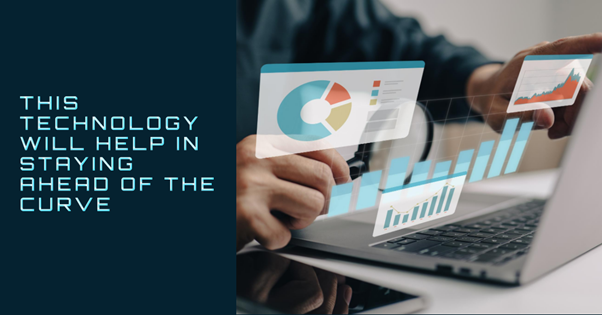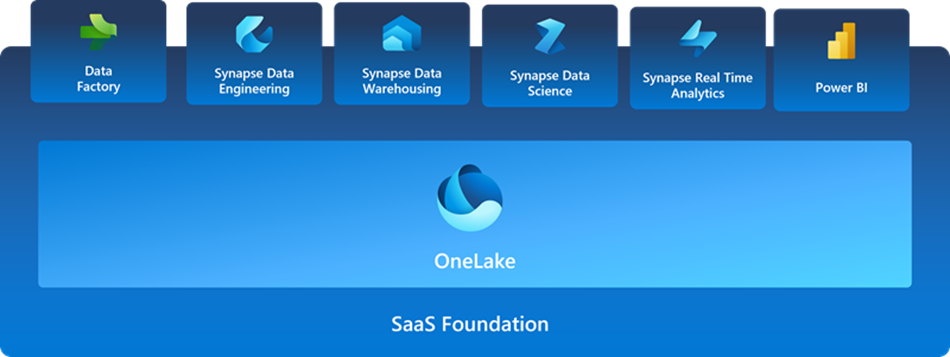Microsoft Fabric. The Key to Data-Driven Decision Making
#microsoft fabric, #microsoft 365
The data in today’s world carries great value, and it has exponential potential. A recently introduced integrated analytics platform called Microsoft Fabric has come up with an all-new way to work and utilize data for the greater benefit of business.
Microsoft Fabric was introduced to simplify the data analytics landscape, improve collaboration, enhance security, offer better scalability and performance, provide a unified analytics experience, reduce costs, and facilitate the integration of AI and machine learning. This move aims to empower organizations with a more efficient and effective data-driven decision-making process.

What is Microsoft Fabric?
Microsoft is bringing uniformity and consistency in data analytics with Fabric and this thoughtful offering brings a new way to work with data as its foundation addresses key points to increase the ease and convenience that lies in one compute, one lake, one copy, and one license in its core:
- One compute implies that you only need to pay for one compute resource, regardless of how many data pipelines you create or how much data you process.
- One lake represents that you only need to store your data in one place, regardless of where it comes from or how it is structured.
- One copy indicates that you only need to store one copy of your data, regardless of how many people or applications need to access it.
- One license signifies that you only need to purchase one license for Microsoft Fabric, regardless of how many users or applications need to access it.
Microsoft has addressed the requirement for a more comprehensive and integrated approach to data analytics with Fabric. Especially in organizations, where data keeps on being generated and gets added further, difficulty with managing and analyzing data effectively often occurs. But now this challenge is also being addressed with Microsoft Fabric to handle all data-related requirements of an organization under one unified platform which results in making better data-driven decisions in the organization.

What are the Essential Constituents of Microsoft Fabric?
Fabric brings together experiences such as Data Engineering, Data Factory, Data Science, Data Warehouse, Real-Time Analytics, and Power BI into a shared SaaS foundation. This integration provides an extensive range of deeply integrated analytics in the industry:
-
Data Engineering. Data engineering is an essential part of the data analytics process. It is getting the data ready for analysis, and data engineering helps organizations make informed decisions based on their data. Firstly, to start with the data engineering process data needs to be gathered from different sources such as SQL server database, then it needs to be cleaned and transformed into a format that can be analyzed. Once the data is ready, it can be loaded into a data warehouse or lake for analysis.
-
Data factory. Data factory is a cloud-native tool that helps in data engineering tasks. Having a graphical user interface makes it easy to create and manage the data pipelines. A data pipeline is a set of steps used to move data from one place to another. For example, a data pipeline is used to extract data from a database, clean it, and load it into a data warehouse.
-
Data Warehouse. We can call the warehouse a database system. A database that has significantly high performance to perform analytical operations over data. It is more like a library, where data is stored for future analysis.
-
Data Science. In this process various statistical and machine learning techniques are applied to extract insights from data that are useful for further application. Similar to a scientist conducting different experiments. With data science, we can build models, train algorithms, and interpret results to identify trends and patterns in data.
-
Real-Time Analytics. This is the process of analyzing data and acting on it as soon as it gets generated. For example, a security guard monitors CCTV footage in real time, where trends and patterns can be identified and acted upon quickly.
-
Power BI. The intelligent insights come with the representation of data that has now been integrated into Microsoft Fabric with Power BI, which is currently widely used across industries. Power BI provides data visualization, dashboards, and reports which give a clearer view and add a sense to data for better understanding, and it also has AI capabilities with co-pilot in Microsoft Fabric for faster results and less time-consuming.
Fabric consolidates these diverse experiences within a single platform, providing the industry's most extensive big data analytics solution. It empowers both organizations and individuals to transform vast and intricate data repositories into actionable tasks and analytics, embodying the principles of data mesh architecture.

What are the advantages of using Microsoft Fabric?
A key benefit of Microsoft Fabric lies in its exceptional scalability and resilience. Fabric offers a distributed system runtime that enables applications to effortlessly expand to accommodate increasing demands. This is accomplished through the automated distribution of workloads across numerous nodes, enhancing resilience against failures and guaranteeing the continuous availability of applications:
- Budget Friendly. Microsoft Fabric can help reduce cost, especially when you are processing large amounts of data and when you have a large number of users or applications with one compute capacity across different applications and requirements of a single license, also improves collaboration as well between different teams and departments by providing a single platform for data sharing and analysis.
- Time savings. Replication of data has been addressed with Microsoft Fabric as industry-standard format data has been generated, the same can be used in each stage involved in data analytics, which results in significant development time reduction and overhead when using the services separately.
- Improved decision-making. Earlier, Business Users had limited visibility and understanding of the data which is also being changed with Microsoft Fabric's single platform with a user-friendly interface and integration of business intelligence tools such as Power BI. Business users have the feasibility to validate the data initially, which can result in increased profits with well-informed decisions and also a competitive edge as decision-makers now get early insights into the data.
- Security. One of the major concerns organizations have when it comes to data handling of sensitive information has also been taken into consideration with Microsoft Fabric's numerous security features that can help prevent data from unauthorized access and misuse. This can also help to reduce the risk of data breaches, which is essential and brings in confidence.
For a better understanding of how Microsoft Fabric can be helpful to organizations to make better data-driven decisions, let’s review a few examples:
- Retail Organizations. Fabric can help analyze data of customers to identify trends and patterns. With this information, more customer-centric marketing campaigns can be formed, and better product offerings can be made.
- Financial institutions. Fabric can analyze financial data for the identification of frauds and to get better investment advice.
- Healthcare sector, such as hospitals or for research purposes. Fabric can be used to identify diseases and improve the line of treatment by analyzing data on patient's medical history.
These are only some of the various possibilities and use cases of Microsoft fabric usability, which can differ according to industry and organization needs.
Has Microsoft already launched Microsoft Fabric?
Currently, Microsoft Fabric is in public preview for customers to get access and provide feedback. Services and features in the Fabric’s preview aren’t yet complete, and there are possibilities of modifications before it's released following the preview feedback.
Microsoft Fabric has developed some new, unique capabilities to cater to the importance of data in today’s world and it will be fascinating to see the launch of the full-fledged Microsoft Fabric in the coming months after the current preview period is over.
Microsoft Fabric Preview requires a Power BI license. Once you have the paid license you can navigate to Microsoft Fabric Portal to start the trial of 60 days, else you can navigate to Microsoft Fabric Portal to sign up for a free Power BI individual trial license.
Share
2023-09-12